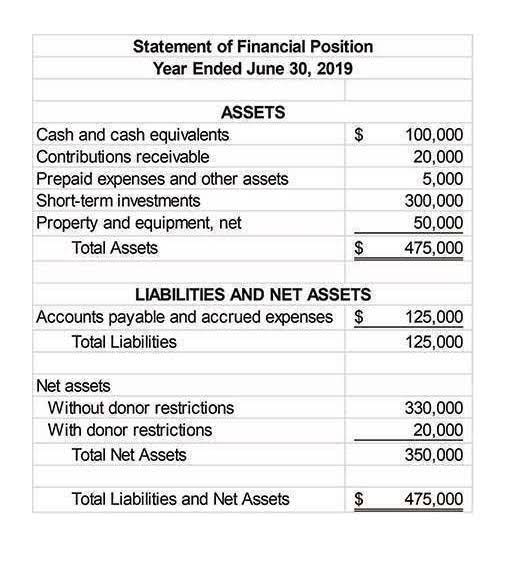
In May 2024, Sankofa sells its entire manufacturing plant in New Jersey to an unrelated person. The sales proceeds allocated to each of the three machines at the New Jersey plant is $5,000. This transaction is a qualifying disposition, so Sankofa chooses to remove the three machines from the GAA and figure the gain, loss, or other deduction by taking into account their adjusted bases. For a short tax year not beginning on the first day of a month and not ending on the last day of a month, the tax year consists of the number of days in the tax year. You determine the midpoint of the tax year by dividing the number of days in the tax year by 2. You multiply the reduced adjusted basis ($288) by the result (40%).

Depreciation: Allocation Not Valuation
If these requirements are not unearned revenue met, you cannot deduct depreciation (including the section 179 deduction) or rent expenses for your use of the property as an employee. Qualified nonpersonal use vehicles are vehicles that by their nature are not likely to be used more than a minimal amount for personal purposes. They include the trucks and vans listed as excepted vehicles under Other Property Used for Transportation next.
- Generally, if you’re depreciating property you placed in service before 1987, you must use the Accelerated Cost Recovery System (ACRS) or the same method you used in the past.
- Therefore, the DDB depreciation calculation for an asset with a 10-year useful life will have a DDB depreciation rate of 20%.
- It also discusses the rules for determining depreciation when you have a short tax year during the recovery period (other than the year the property is placed in service or disposed of).
- The passenger automobile limits are the maximum depreciation amounts you can deduct for a passenger automobile.
- Tara Corporation, a calendar year taxpayer, was incorporated on March 15.
- Businesses need to stay updated with accounting regulations and changes when calculating asset depreciation expenses.
Challenges with Depreciation
- As a freelancer or independent professional, you can transform your business with Workee’s powerful business management tool.
- Depreciation is the process of allocating the cost of an asset over its useful life, and it’s typically calculated using the straight-line method or the unit-of-production method.
- However, land is a notable exception–it doesn’t wear out or deteriorate, so it’s not depreciable.
- The Sum of the years’ digits (SYD) depreciation is a type of depreciation method used to calculate the value of an asset over its useful life.
- Learn the difference between accumulated depreciation vs depreciation expense, and how they impact financial statements and tax liabilities.
- A partnership acquiring property from a terminating partnership must determine whether it is related to the terminating partnership immediately before the event causing the termination.
Instead of gradually depreciating an https://kazi-trading.com/meaning-benefits-examples-2025/ asset, Section 179 lets you write off the entire purchase price in the year it’s placed into service. For 2023, the maximum deduction is a whopping $1,160,000, with a phase-out threshold beginning at $2,890,000 in equipment purchases, rendering it a boon for small and medium enterprises looking to expand. Additionally, there has been discussion about increasing the useful life of certain assets to reduce the amount of depreciation expense taken each year. The common methods are straight-line, declining balance, sum-of-the-years digits, and production units. Each method has its own advantages and disadvantages, so it is important to understand which one works best for your particular situation. Yes, a specific type of accountant known as a depreciation accountant specializes in understanding the concept of depreciation and how it affects a company’s finances.
- Depreciation applies to physical assets, like equipment or property, while amortization deals with intangible assets such as intellectual property and goodwill.
- Businesses use methods such as First-In, First-Out (FIFO), Last-In, First-Out (LIFO), or weighted average cost to calculate inventory values and COGS.
- While this process may seem intricate in theory, its application is relatively straightforward, as illustrated in the example below.
- Also, qualified improvement property does not include the cost of any improvement attributable to the following.
- Depreciation expense is a non-cash operating expense that reduces net income.
- In another way, the depreciable property generates income, and you own and use it for more than a year.
Subscribe to Taxfyle

The difference between the debit balance in the asset account Truck and credit balance in Accumulated Depreciation – Truck is known as the truck’s book value or carrying value. At the end of three years the truck’s book value will be $40,000 ($70,000 minus $30,000). The reason for this is that buildings are considered to be long-term investments, and their value is expected to increase over time. This means that the value of the building will not decrease over time like other types of property, such as vehicles or machinery. If the asset has a high market value, you should probably get it formally appraised to better understand how much it originally cost.
Depreciable assets help businesses recover costs over time, reducing taxable income and improving cash flow. Understanding how to correctly depreciate property depreciable assets examples ensures you maximize tax benefits while staying IRS-compliant. Depreciation is a tax-deductible expense that allows businesses to reduce their taxable income. This is especially useful for assets like buildings and structures, which can be depreciated over time.
